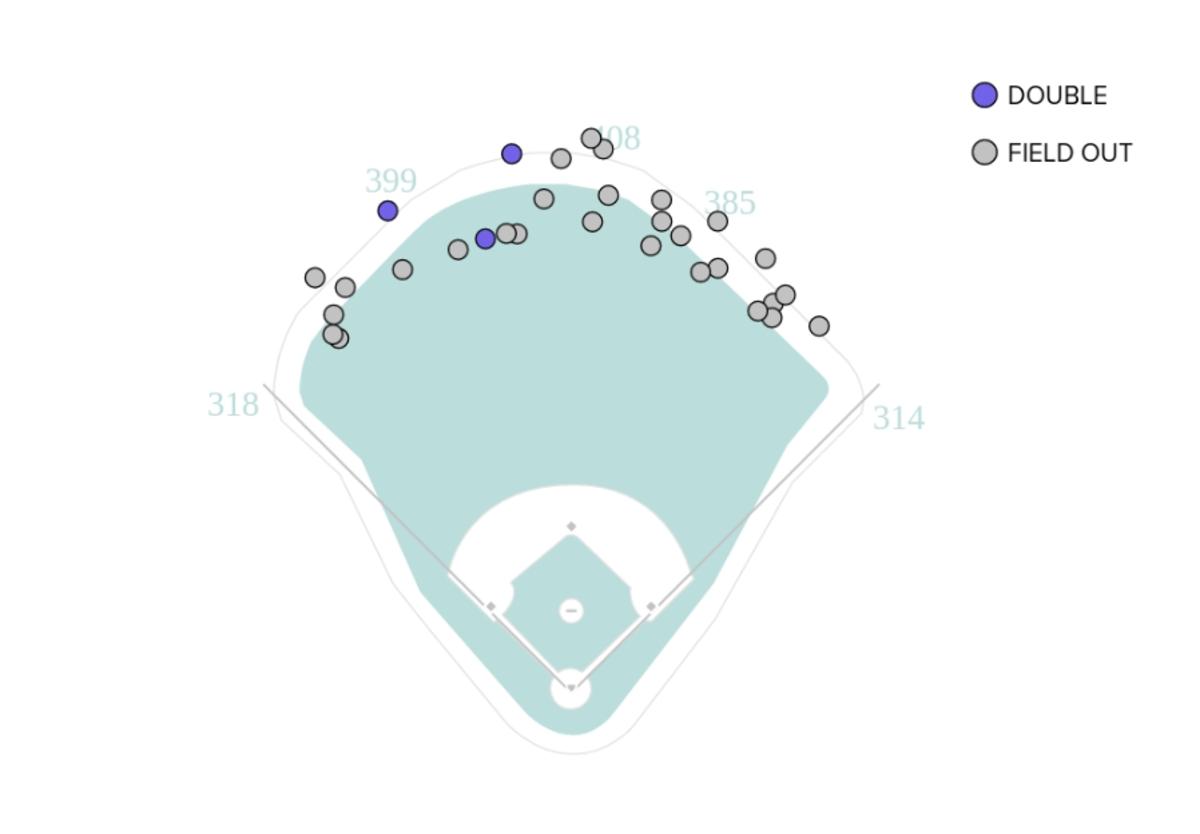If Mexico City Lands an MLB Franchise, It Could Pay Off for Aaron Judge

After watching baseballs fly at Estadio Alfredo Harp Helú in Mexico City last weekend, when the Giants and Padres smashed 15 home runs in two games, a thought came to me: how many home runs would Aaron Judge hit if that launching pad was his home ballpark?
So, I did the math.
Start with the average fly ball at Yankee Stadium last season and compare it to the average fly ball last weekend in Mexico City:
Fly Balls by Venue
Ballpark | Exit Velocity | Launch Angle | Distance | No. | HR | Pct. |
|---|---|---|---|---|---|---|
2022 Yankee Stadium | 92.8 | 37.0 | 313 | 1,040 | 189 | 18.2 |
2023 Mexico City | 97.0 | 36.0 | 439 | 29 | 14 | 48.3 |
Well, that’s just absurd: nearly every other fly ball in Mexico City was a home run. The stadium is more than a mile and a half above sea level, some 7,349 feet. It makes Coors Field look like a pitchers’ park.
But maybe the Padres and Giants hitters were just superb at squaring up pitches. That exit velocity is impressive.
So, let’s isolate fly balls in both places when hit at about the same velocity with the same launch angle. The average MLB home run is hit at an exit velocity of 105 mph with a launch angle of 28 degrees. Let’s see what happens at fly balls hit just below that average home run exit velocity and with a slightly higher launch angle in both parks:
Fly Balls by Venue, Exit Velocity 95-100 mph, Launch Angle 30-35 Degrees
Ballpark | Average Distance | No. | HR | Pct. |
|---|---|---|---|---|
2022 Yankee Stadium | 359 | 57 | 16 | 28.0 |
2023 Mexico City | 398 | 3 | 2 | 66.7 |
A fly ball hit at Yankee Stadium travels 39 feet farther when struck the same way in Mexico City. That’s 10.9% farther!
San Diego outfielder Fernando Tatis Jr. hit a pop-fly home run in Mexico City—just 95.4 mph with a launch angle of 38 degrees. There were 38 fly balls hit in the majors last year with those metrics. Only two were home runs. Let’s compare the ball Tatis hit to the 38 fly balls last year not hit in Mexico:
Fly Balls Hit 95 mph with 38-Degree Launch Angle
Ballpark | Average Distance | No. | HR | Pct. |
|---|---|---|---|---|
2022 MLB | 340 | 38 | 2 | 5.3 |
2023 Mexico City | 376 | 1 | 1 | 100.0 |
The ball Tatis hit in Mexico City traveled farther than the same fly balls in MLB last season by—wait for it—10.6%.
Now we have a pretty good handle on how much farther a ball travels a mile and a half above sea level. Our next step is to imagine Judge playing 81 games at Estadio Alfredo Harp Helú instead of Yankee Stadium and how that influences his ball flight.
Let’s look at every fly ball Judge hit at Yankee Stadium last season that traveled at least 310 feet and was not a home run:
Judge Deep Non-HR Fly Balls at Yankee Stadium, 2022

Now, let’s give those fly balls the Mexico City boost: add 11% to each fly ball distance. The outfield dimensions at Estadio Alfredo Harp Helú are not that different from Yankee Stadium: 332 down the lines and 410 to center, distances only 4% and 6% farther down the lines and less than 1% to center. With the 11% boost, a warning-track fly ball at Yankee Stadium is a home run in Mexico City.
The verdict? Conservatively, Judge gets at least 14 more home runs if he plays a season with Estadio Alfredo Harp Helú as his home ballpark. On the low end of the estimate, that would make Judge the MLB single-season home-run champion with 76 home runs.
With its population base and love of baseball, Mexico City is in the discussion as a possible expansion city. But a mile and a half into the sky, it would host an even more extreme version of baseball than Coors Field—a place where pop flies become home runs, and a future home-run champion might hit 80.
